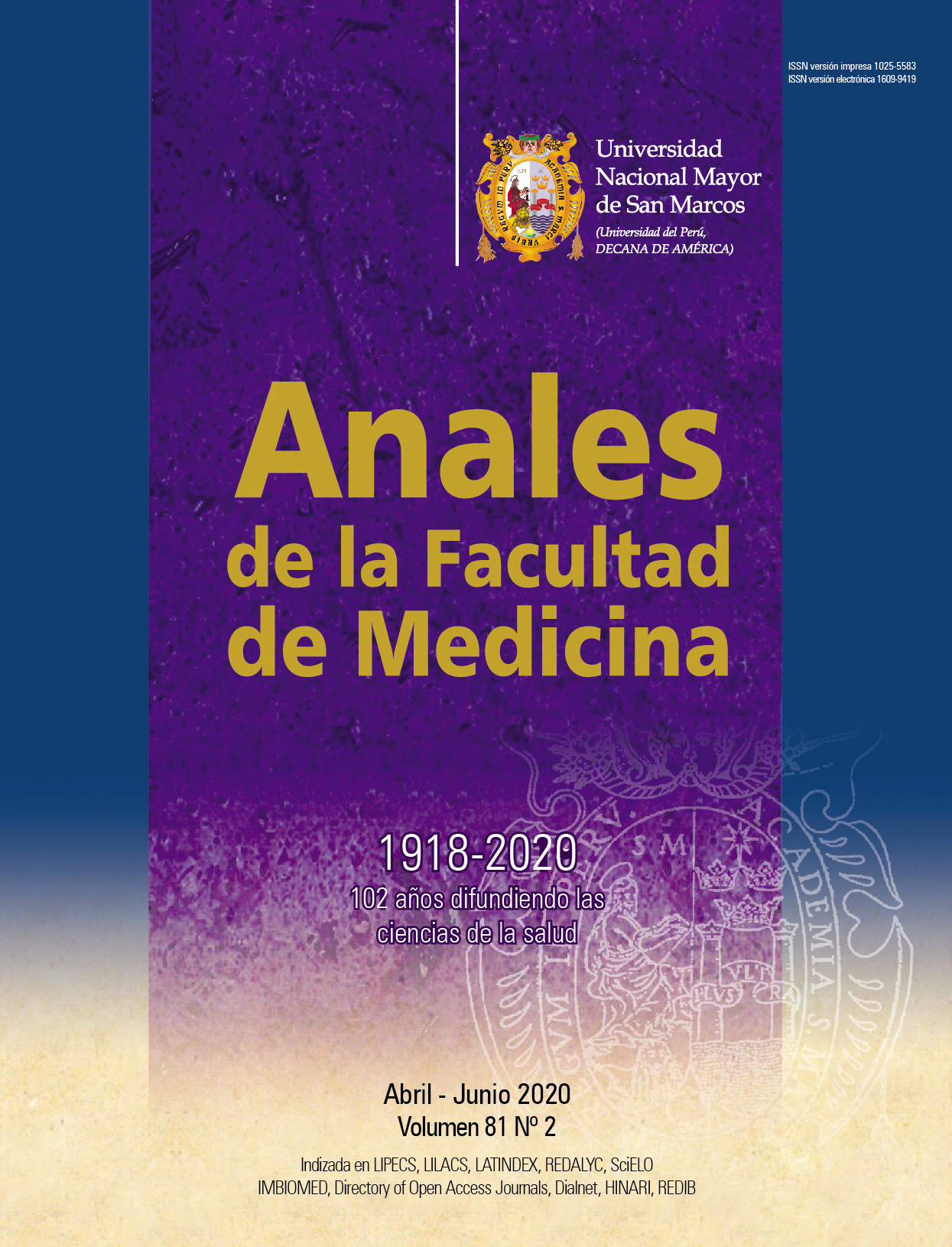Association between abdominal obesity and demographic factors according to altitude levels in Peru
DOI:
https://doi.org/10.15381/anales.v81i2.18408Keywords:
Obesity, Abdominal, Demography, Altitude, PeruAbstract
Objective. To determine in the adult population of Peru, the characteristics of abdominal obesity and its relationship with different levels of geographic altitude, according to gender, age groups, nutritional status, and area of residence. Methods. A descriptive study was carried out based on secondary sources: National Household Survey (ENAHO 2012-2013) of the National Institute of Statistics and Informatics (INEI) and Ministry of Health Lima, Peru. Abdominal obesity was identified by waist circumference and waist / height ratio. The altitude was stratified into 3 levels: <1000 meters above sea level, from 1000 to 2999 meters above sea level, and ≥ 3000 m.a.s.l. Results. The highest prevalence of abdominal obesity was found in the female gender (48,2% - 87,4%), in the age group from 40 to 59 years (38,4% - 89,5%), in the obese (85,9% - 99,9%), and in urban areas (36,8% - 86,3%), respectively. These prevalences decreased from 1000 meters above sea level, with the exception of those corresponding to nutritional status. The prevalence ratio adjusted for gender, age group and area of residence, showed a decrease in relation to altitude. Conclusion. The population living in high-altitude cities showed low prevalence of abdominal obesity in relation to those living in lower-altitude cities.
Downloads
Published
Issue
Section
License
Copyright (c) 2020 Anales de la Facultad de Medicina

This work is licensed under a Creative Commons Attribution-NonCommercial-ShareAlike 4.0 International License.
Those authors who have publications with this magazine accept the following terms:
- Authors will retain their copyrights and guarantee the journal the right of first publication of their work, which will be simultaneously subject to Creative Commons Attribution License that allows third parties to share the work as long as its author and its first publication this magazine are indicated.
- Authors may adopt other non-exclusive licensing agreements for the distribution of the version of the published work (eg, deposit it in an institutional electronic file or publish it in a monographic volume) provided that the initial publication in this magazine is indicated.
- Authors are allowed and recommended to disseminate their work over the Internet (eg: in institutional telematic archives or on their website) before and during the submission process, which It can produce interesting exchanges and increase quotes from the published work. (See El efecto del acceso abierto ).



